How to create personas for SEO: Aligning content with real search intent
Learn how to build SEO personas that map to real search behavior, uncover user intent, and guide content strategy for better rankings and engagement.
When you market your business, who are you marketing to?
Well, your audience, of course. But let’s dive a little deeper here. To be a truly effective marketer, you need to know: Who are the individuals that make up your audience?
To find out, you need to create search engine optimization (SEO) personas.
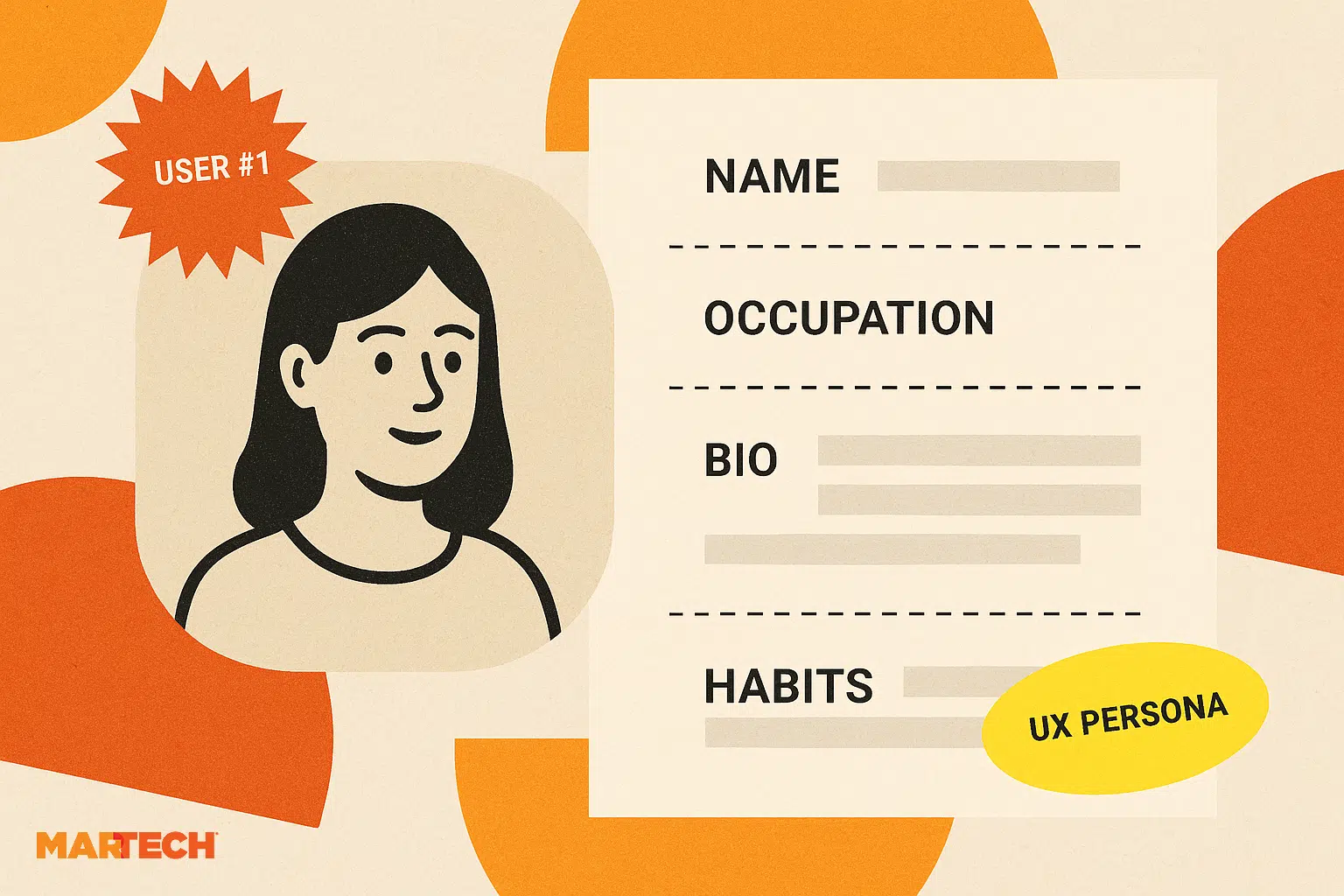
An SEO persona is a semi-fictional character that you can create based on one of your target audience segments (one of the groups of people you’re trying to attract to your website).
For example, if you’re a painter, your audience segments might be people who’re about to list their homes for sale or people who want their house painted but lack the time, skills, and desire to do it themselves.
Marketers use SEO personas to align keyword strategies and content with user needs, helping secure more search visibility and more relevant search traffic.
Without personas to guide your marketing efforts, you’re a lot more likely to spend valuable time focusing on the wrong channels, creating content that doesn’t connect with your audience, and optimizing for keywords that don’t bring in the right traffic.
In this guide, we’ll show you a super straightforward way to create detailed SEO personas so that you can skip all of those potential pitfalls.
We’ll cover how to get insights from search data, identify your audience’s intent, and map content to what your audience is actually searching for. In the end, you’ll craft a persona-building approach that drives both rankings and conversions–a.k.a. success!
Why personas are essential for your SEO strategy
Search engines used to work by pulling up results that included the exact wording (or close to it) that the searcher typed in. That’s what their algorithms were created to do. You could write a blog post about “why SEO is important” and pretty easily rank for the search term “why SEO is important.”
Today, though, it’s a whole lot more complicated. Successful SEO efforts now depend on truly understanding your audience and their search intent, not just “writing for the algorithm.”
SEO personas are your key to doing just that.
Personas help you develop content that addresses your ideal audience’s specific search patterns, needs, desires, and pain points. When you understand your audience on a deeper level, you can create content that genuinely answers their questions and which they actually want to read.
Which means…
No more relying on best guesses. You can nail your marketing content on the first try without trial and error.
For example, say you’re an exercise equipment company trying to sell more treadmills. You’ve created a lot of content like “10 Best Treadmill Brands” and “5 Top Affordable Treadmills,” but there’s a lot of competition and you aren’t ranking very well.
When you work on creating search-driven personas, though, you find that your audience has more specific questions around space limitations, noise levels, joint impact, and how to work using a treadmill into their daily routine. So, you switch to writing content around those questions.
Now, when users visit your content, they’re satisfied by your relevant, well-thought-out content, they spend time on your site, and they share your content with others. Search engines recognize those relevance signals and reward you with higher rankings and more visibility.
And just like that, SEO personas increased your traffic and sales.
This is the power you can harness just by using a content strategy built on SEO personas, rather than simply targeting keywords!
Pro tip: To make the SEO persona creation process easier, try using a free persona template.
What makes a good SEO persona?
The best SEO personas include audience details like:
- Descriptive demographics: Age, location, gender, income level, job role, etc.
- Search behavior: Keywords used, information needs
- Pain points: Difficulties they run into that you can solve
- Real customer goals: What they hope to achieve by searching
- Content preferences: Long-form content, listicles, videos, tool comparisons, etc.
Stand-out personas are based as much as possible on real-world data from real people and details from surveys, analytics, and Customer Relationship Management (CRM) software (like HubSpot, Salesforce, and Zoho).
The number one mistake people make when creating SEO personas?
Focusing too much on demographics instead of behavior.
It’s easy to get caught up on demographic data like age range, gender, location, education level, and job role. These data points are fairly easy to find on LinkedIn, for example, so you might find yourself getting carried away, clicking on profile after profile.
What matters more, though, are the behavior details that provide a deeper understanding of how people interact with search engines and content.
What topics are they searching? What types of content do they like the most? Where do they go to find answers to their questions?
Demographics tell you who your audience is while analyzing their search behavior uncovers what they actually do online.
6 key components of a good SEO persona
What exactly should an SEO persona include?

A few fundamental demographics
Start by giving your user persona a few defining characteristics. This will help you understand your audience’s point of view and any specific needs, and it will help you fill out the rest of the persona with more detail.
For example, defining the average age of a specific persona group will inform the platforms you might use to reach them, the types of messages you send, and the content you choose to write that’ll resonate with them.
Aim to define your persona’s:
- Age
- Gender
- Marital status/family stage
- Education
- Occupation
- Income
To figure out these demographics, try modeling them after customers/prospects you actually know, searching for people on LinkedIn with the right titles, or using an audience research tool like Semrush or SparkToro.
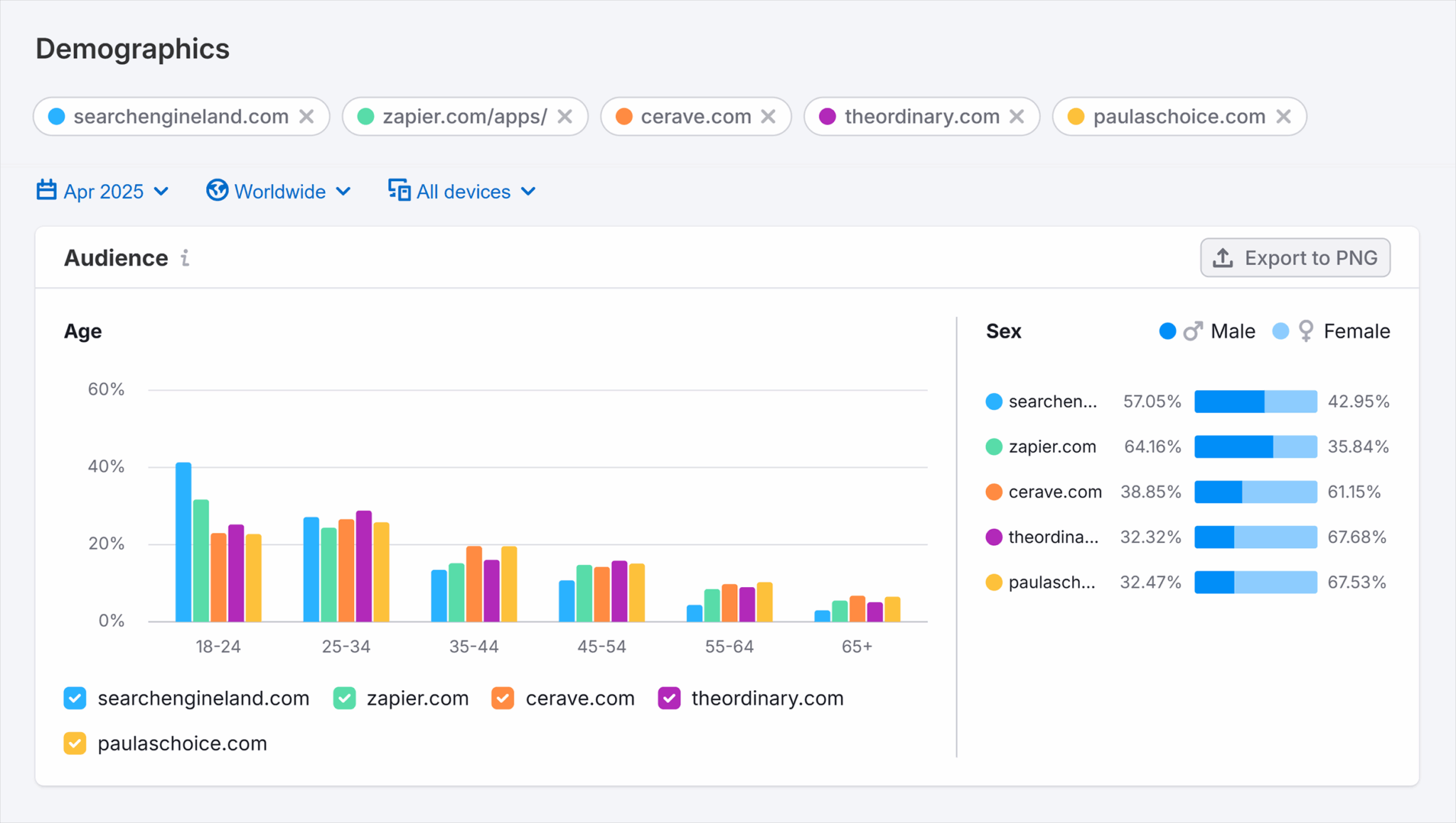
Search goals and pain points
Every time someone types a query into Google, they have a goal for the search. They’re searching because they need some kind of answer.
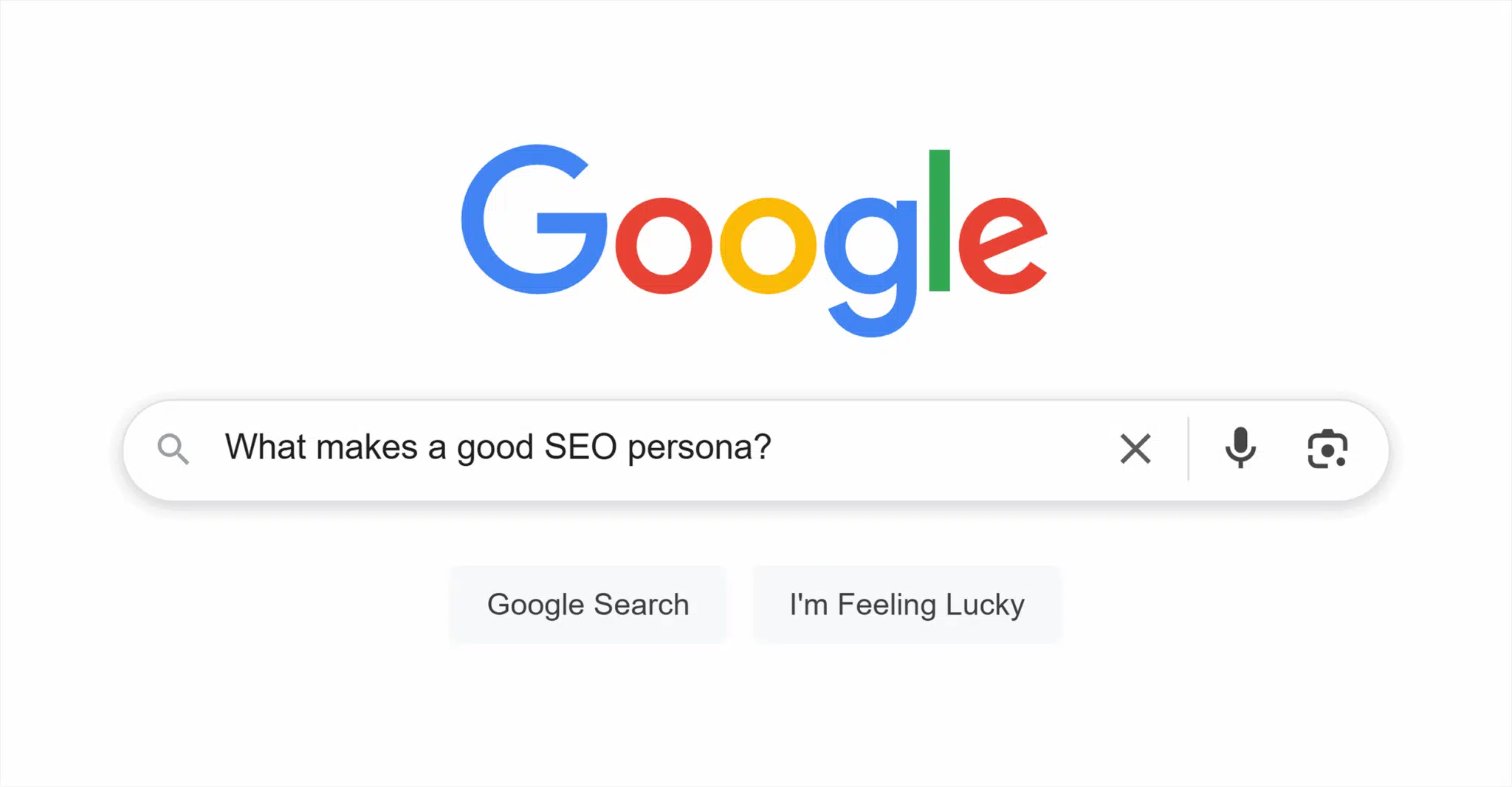
Your SEO persona should clearly define what your audience is trying to accomplish or solve through their searches. One of the best ways to do this is to think of their pain points. Where are they running into issues?
Are they solving a problem with something at home or at work? Are they trying to learn something new? Are they looking for resources they can use to prove a point?
For example, a “Budget-Conscious Home DIYer” persona’s pain points are going to be the expense of renovations, not knowing how to do certain projects themselves, and not owning all the right tools. So, they might have search goals like:
- Finding cost-effective alternatives to expensive renovations
- Learning step-by-step DIY processes to avoid hiring professionals
- Troubleshooting common home repair issues using low-cost materials
Understanding pain points and goals helps you create content that your audience is actually going to be searching for. You’ll ultimately align your content marketing with search volume so you can satisfy the needs of your potential customers.
Query types and user intent
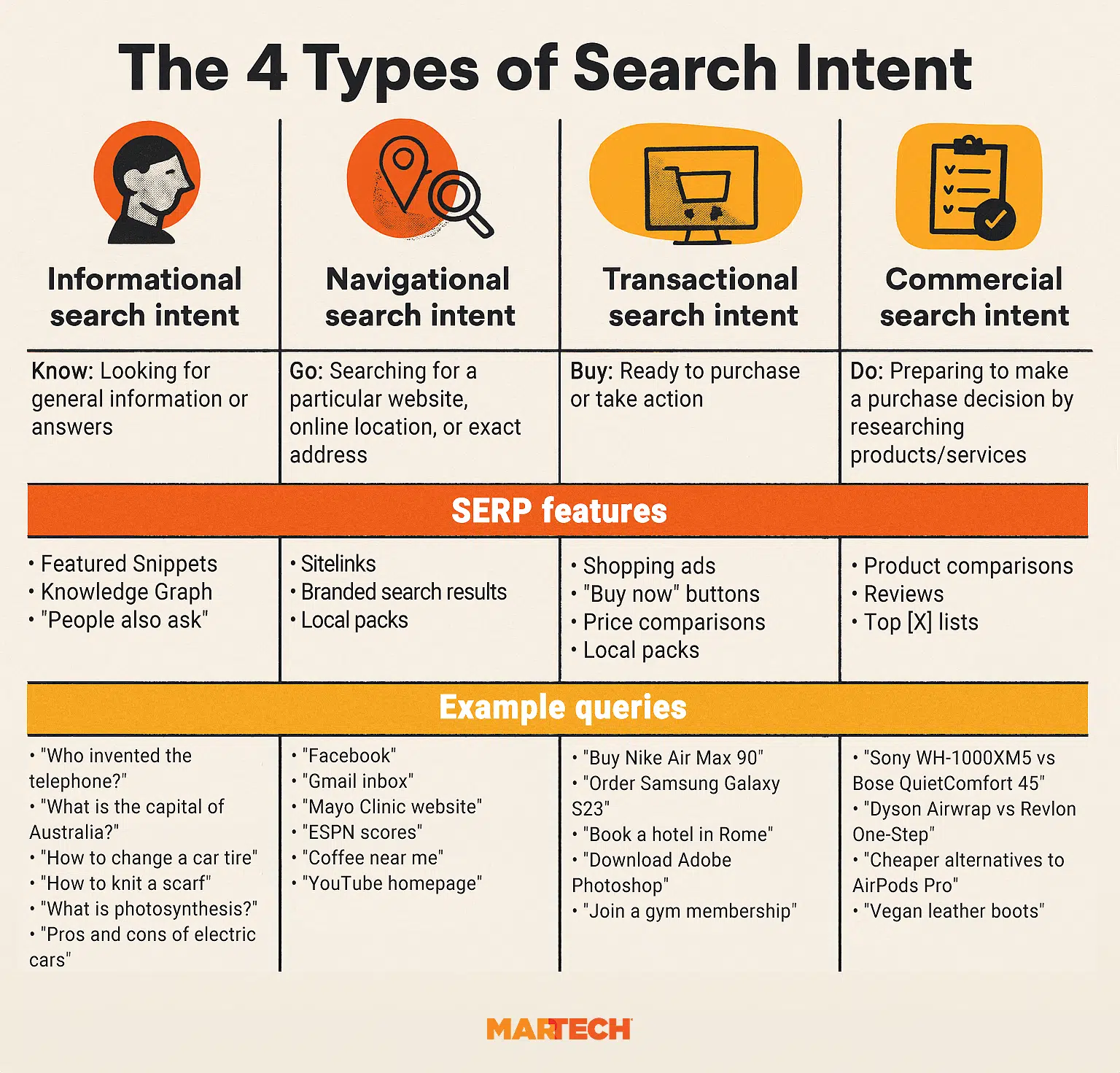
While your personas will use search engines in all kinds of different ways, you can make some predictions about their intent (at least as it relates to you and your product or service).
For each of the SEO personas you create, think about what their intent might be. Are they using search to figure out what to buy, where to buy it, how to fix their issues, or answer their questions without buying anything at all?
Let’s go back to the budget-conscious home DIYer persona. Here are the four different types of search intent, along with some examples of what people in that persona might be searching for:
- Informational queries: Searchers want to gain knowledge about a topic—”how to fix a leaky faucet” or “best time to plant tomatoes”
- Navigational queries: Searchers want to find a specific website or page—”Home Depot near me” or “YouTube DIY channels”
- Transactional queries: Searchers want to complete an action like making a purchase—”buy cordless drill” or “hire local plumber”
- Commercial queries: Searchers want to research brands, products, or services—”buy cordless drill” or “hire local plumber” “DeWalt vs. Milwaukee power tools” or “best bathroom renovation companies”
Once you understand your searchers’ intent, you can match it with the content that they need at just the right time.
Wix Dominated ‘How to Start a Blog’ Keyword for 2+ Years Using Semrush
✓ Find high-volume keywords you can actually win
✓ See which content deserves strategic schema markup
✓ Identify quick-win featured snippet opportunities
Free instant insights.
Preferred content formats and sources
What types of content does your audience want (and expect) to find when they search their queries? Are they expecting videos, in-depth guides, or something else? Also, what type of source do they expect to find it on (social channel, expert blog, etc.)?
Let’s say you run a home improvement blog and offer local contractor services and you’re targeting the budget-conscious DIYer persona. You want to get in front of people looking for how to refinish hardwood flooring.
Go ahead and Google “how to refinish hardwood flooring.” What types of content does Google favor, and what do you think your persona would prefer?

Here are a few different content formats to think about:
- Step-by-step guides with images
- Video demonstrations
- Interactive tools or calculators
- Expert interviews or opinion pieces
- Data-driven research and statistics
- User reviews and testimonials
Pro tip: Remember to really keep your persona’s demographics in mind when deciding on their preferred content formats. Someone in their 50s might really prefer a written step-by-step guide, whereas someone in their 20s is much more likely to prefer a YouTube or TikTok video.
Buying stage
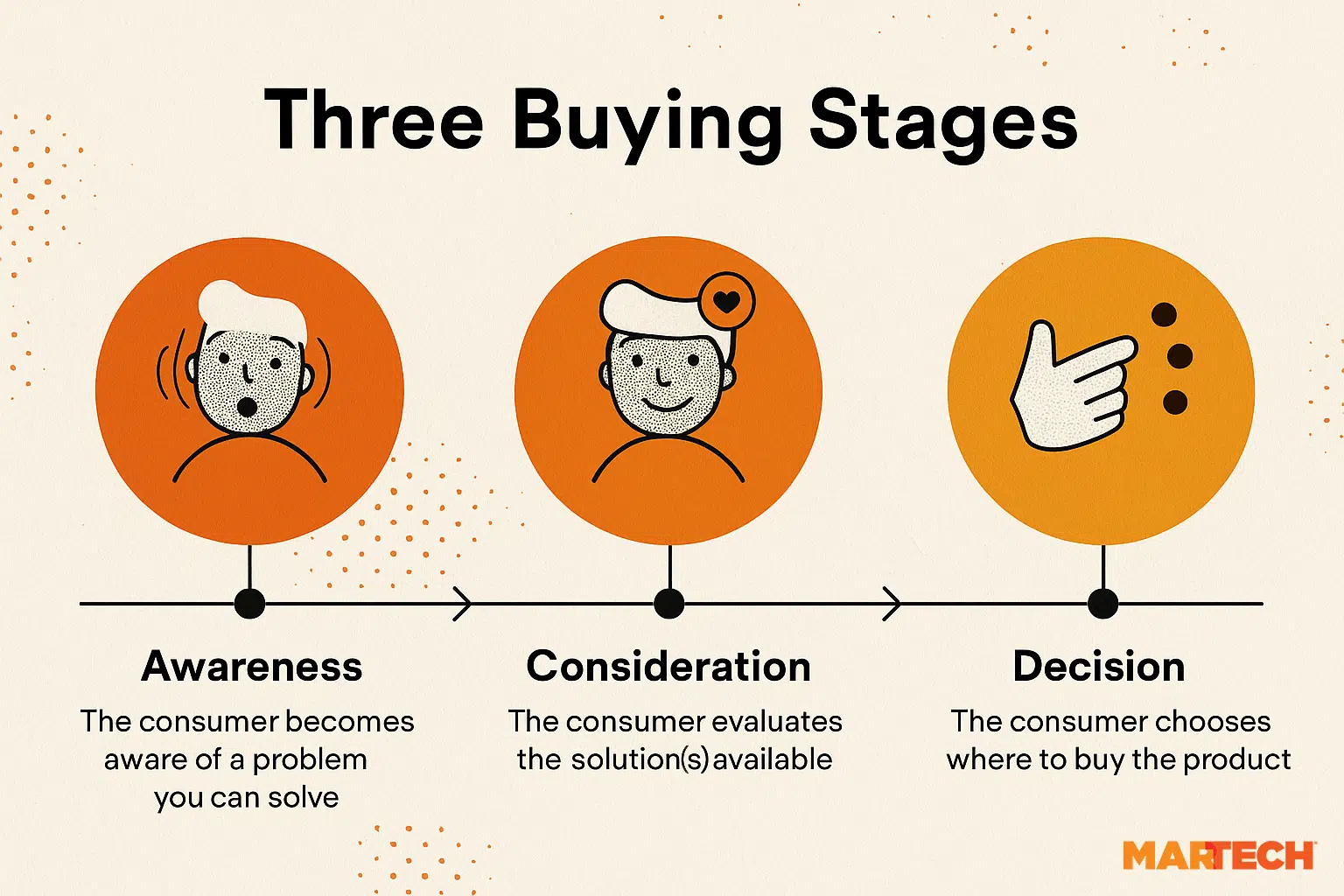
Now, think about whether or not your persona is ready to buy. If not, where are they in the buying process?
Each persona you build might represent a different stage in the buyer journey. There are three stages:
- Awareness stage: Just realizing they have a problem or need
- Consideration stage: Actively researching potential solutions
- Decision stage: Ready to make a purchase or commitment
The stage your persona is in will dramatically change the content you produce for them.
For example, awareness-stage queries might be broad and informational like “how to make home improvements on a budget,” while decision-stage queries often include terms like “buy,” “price,” or “near me.”
Barriers and decision-making factors
Finally, good search personas take into account anything that might prevent conversions and which factors might influence decisions.
For example, our home DIYer is limited by budget, so pricing would be a decision-making factor.
Here are a few more decision-making factors plus how they appear in search queries:
- Budget constraints (“affordable,” “cheap,” “best value”)
- Technical knowledge gaps (“beginner,” “simple,” “easy”)
- Trust concerns (“reviews,” “is [brand] legitimate,” “comparison”)
- Timing issues (“quick,” “same-day,” “how long does it take to”)
Understanding these barriers helps you create content that’s as targeted and helpful to your specific audience as possible.
Pro tip: You can tie your SEO strategy, content strategy, and buyer journey map together with each persona you create. Each persona targets different SEO keywords, requires different content, and follows a different buyer journey. When you bridge all of those with your persona, you’ll be able to reach your ideal audience in the right place at the right time.
Where to find the data you need to build an SEO persona
Now you know the key components you need to put into an SEO persona.
But how do you build an SEO persona if you don’t know all of those audience details off the top of your head?
Like this:
Gather the data.
To create a complete persona that’s not just based on your best guesses, you need to gather data from multiple sources to create a complete picture of your audience’s search behavior. The best search-driven personas combine number-specific quantitative search data (like keyword volumes) with observation-based qualitative insights (like reviews and questions posted to online communities) about audience motivations and challenges.
Here are the top research inputs you can use to understand your audience and create your personas:
Keyword research tools
A keyword research tool is a tool that helps you identify relevant search terms that users enter into search engines. It’s an ideal tool to use when putting together an audience persona.
A tool like Semrush or Ahrefs will not only give you keyword volumes, but it’ll also help you find related terms and questions users ask around the topic.
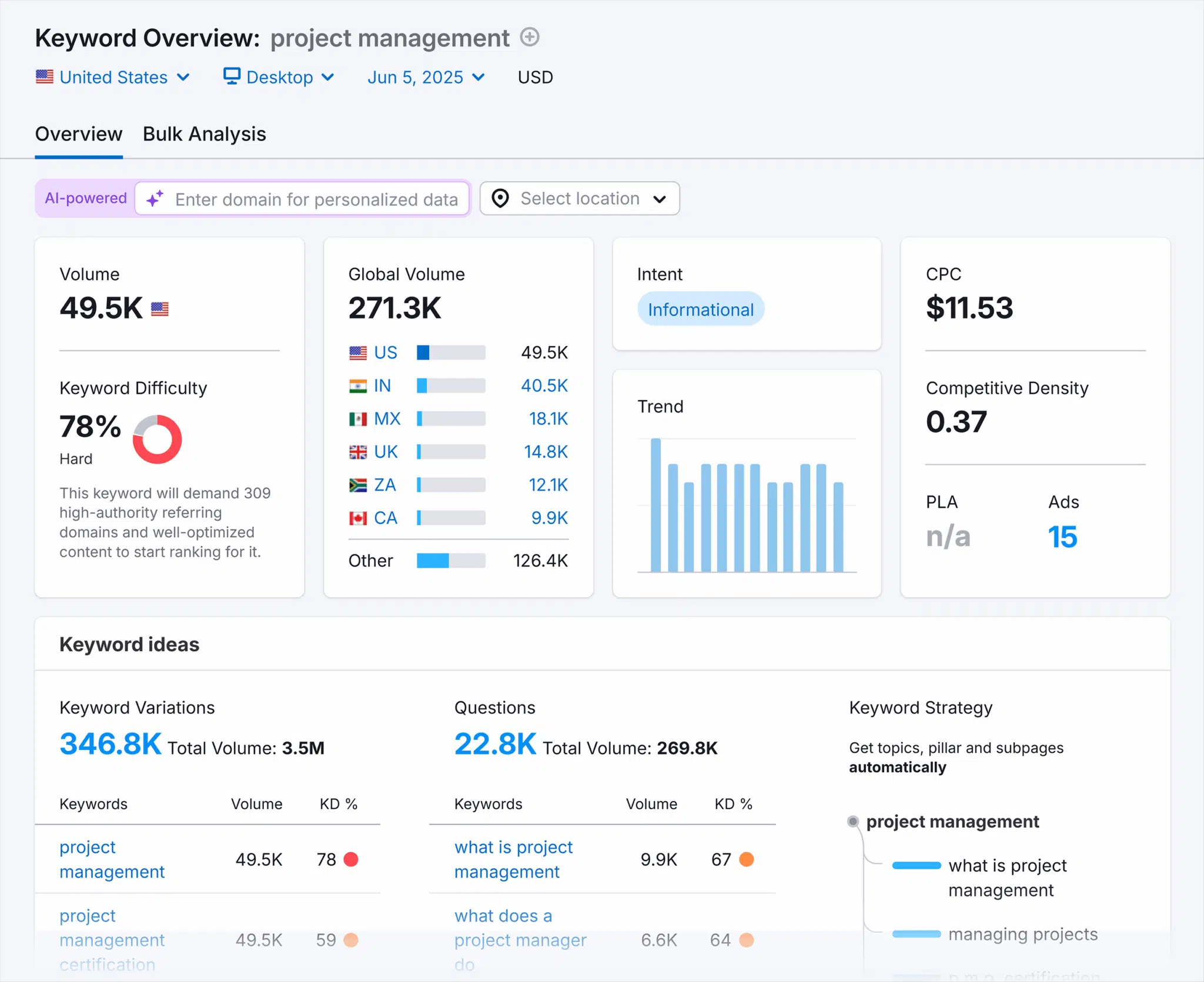
Use keyword research tools to:
- Identify the primary keywords your audience uses at different stages
- Discover long-tail keywords through related keyword suggestions
- Analyze trends in search behavior
- Find question-based queries
Pay special attention to the “People Also Ask” and “People also search for” sections, as these often reveal the semantic search terms and related concerns your audience has around your main topics.
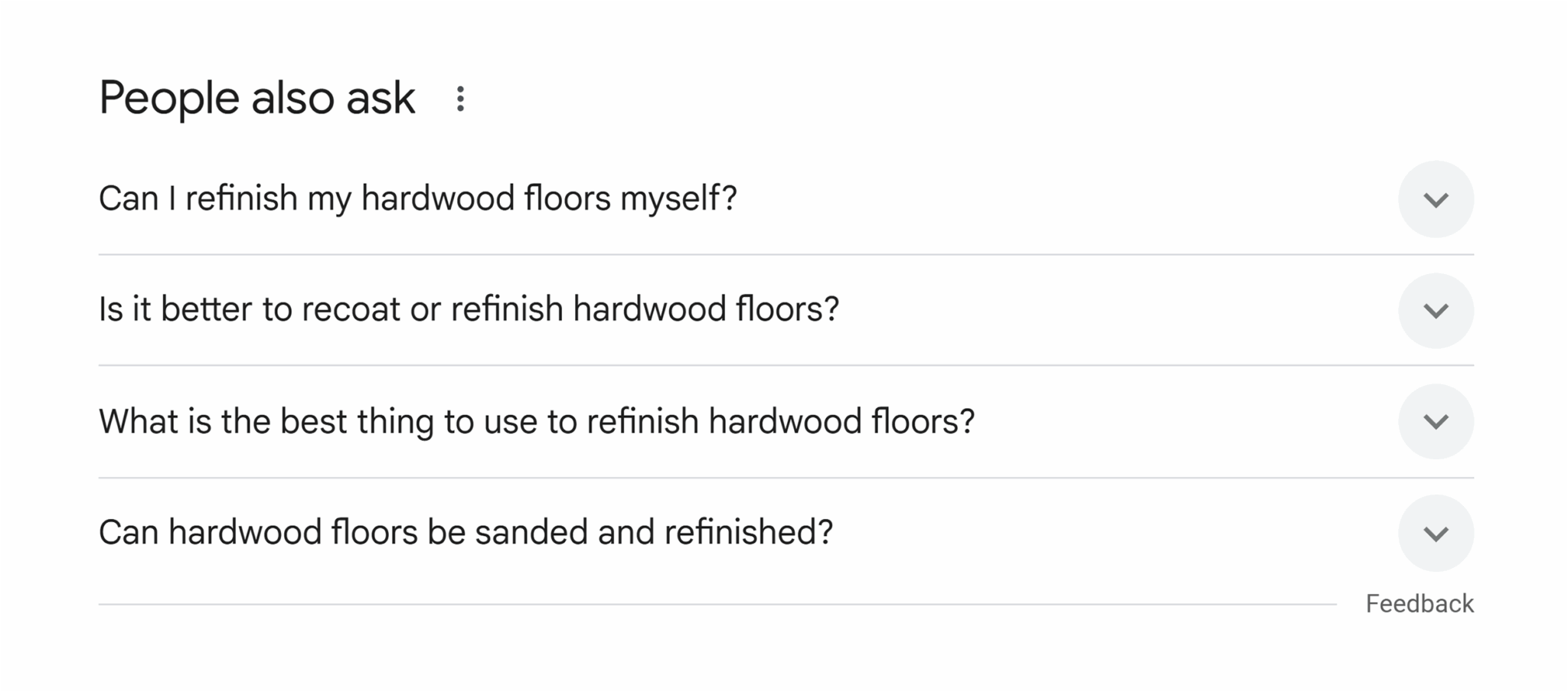
Google Search Console
Creating SEO personas using Google Search Console (GSC) is a powerful way to understand who is finding your site through search and why.
GSC provides behavioral insights based on search queries, pages, and click-through rate (CTR) that you can use to build data-informed SEO personas.
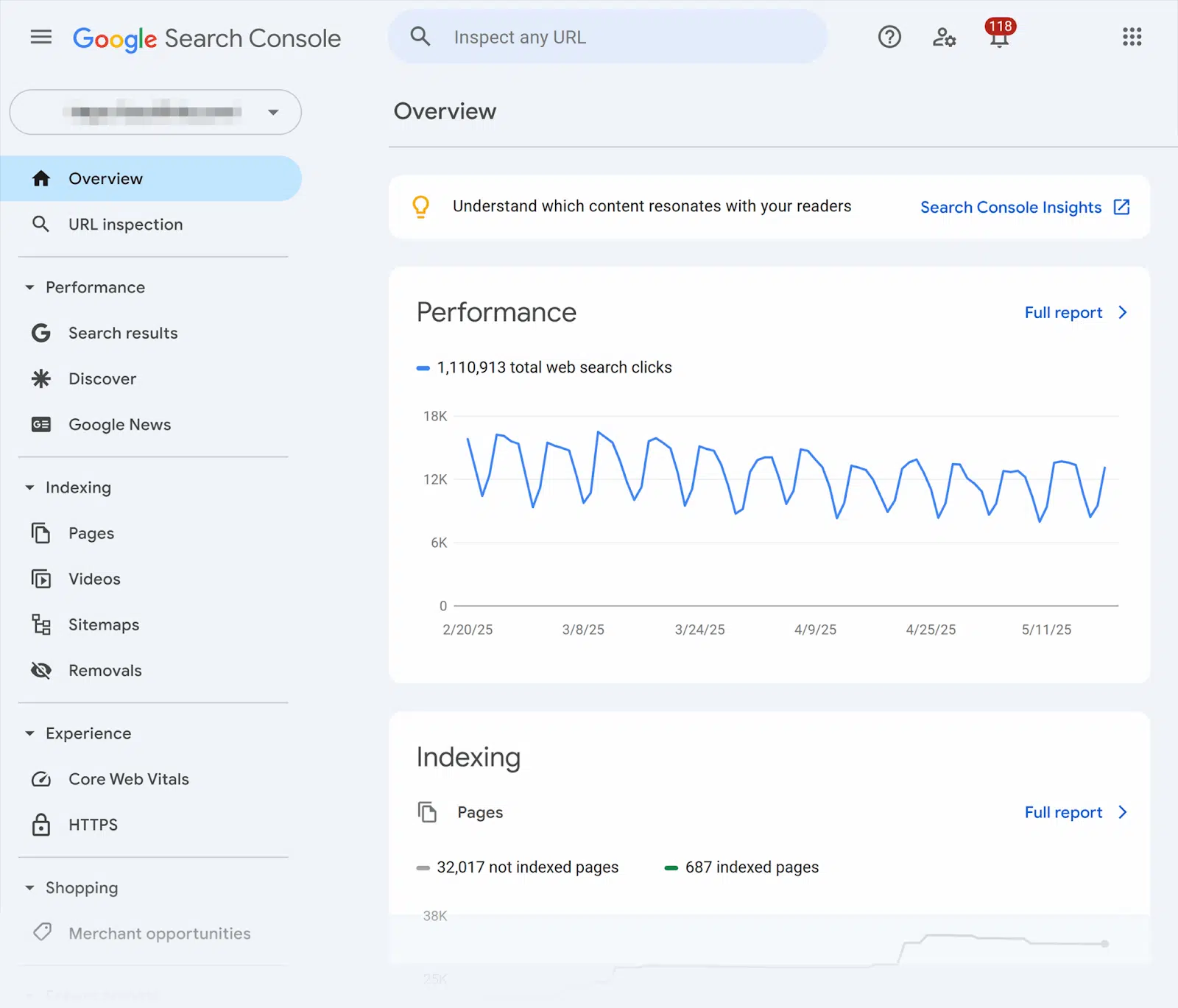
Here’s how:
- Analyze top queries to identify search intent and common pain points
- Map queries to landing pages to understand which types of content attract different user types
- Segment data by location and device to uncover behavioral patterns and refine persona traits
This data helps you understand the gap between what you think your audience searches for versus their actual search preferences.
Dig deeper: How to Use Google Search Console for Keyword Research
Analytics platforms
Whether you use Google Analytics, Hotjar, HubSpot, or another analytics platform, you can gather behavior data to better understand your audience and create data-informed SEO personas.
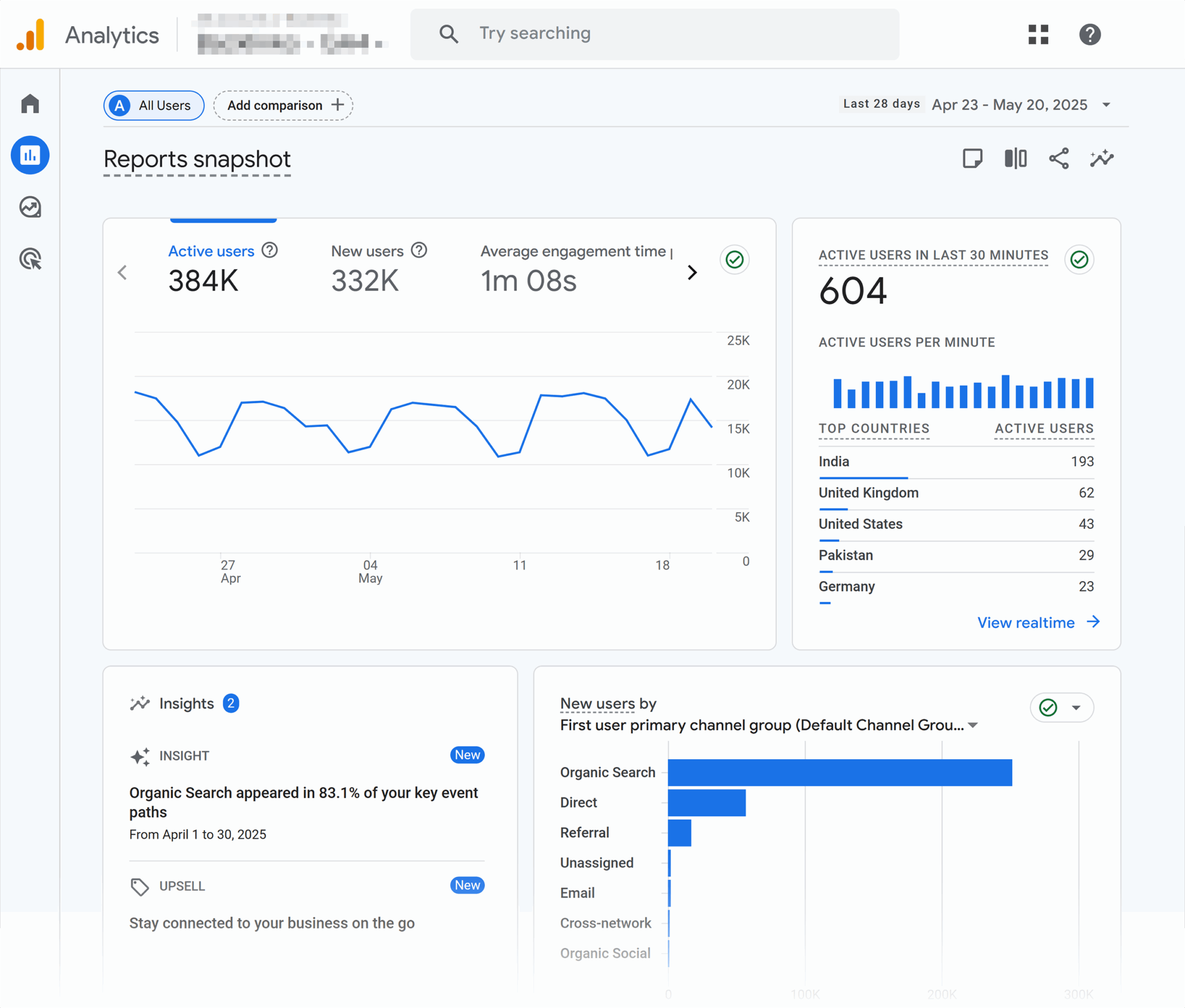
These platforms help you understand how your users interact with your website once they reach it. This kind of data is invaluable for building personas.
For example, you might find a landing page that has a really low engagement rate. That could mean that the traffic (a.k.a. the audience) you’re driving there isn’t finding it very useful. Use that knowledge to help edit the content so that it appeals to the right audience.
Key metrics to use for SEO persona development:
- Engagement rate and average engagement time
- User engagement events (like scrolls, clicks, video views) by page or topic
- Organic search conversion paths
- Landing pages with low engagement or high drop-off, signaling unmet expectations
Heat mapping tools like Hotjar can show you exactly which parts of your content resonate most with different user segments, helping refine your intent-based content strategy.
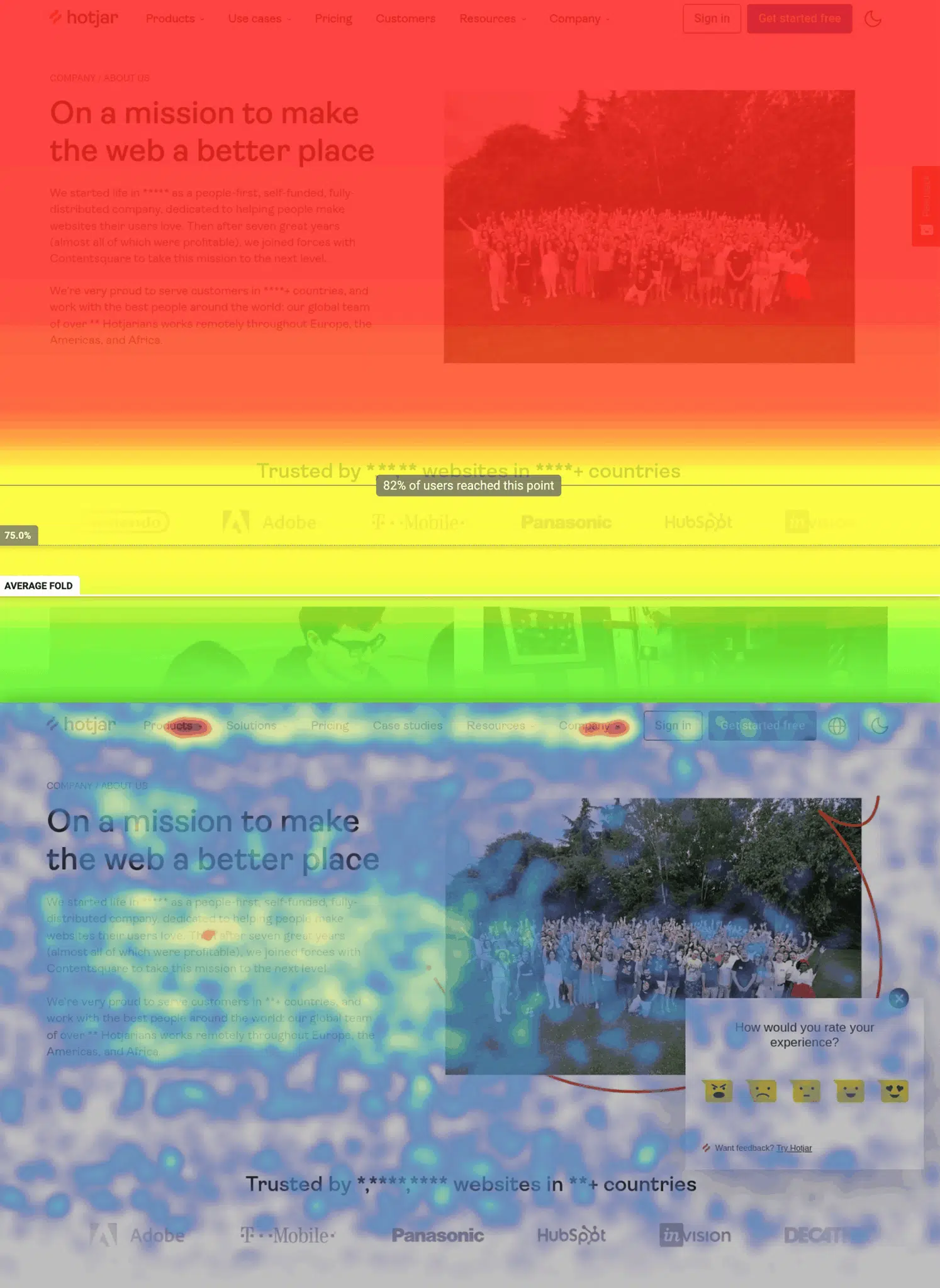
Dig deeper: SEO KPIs: Embracing user-centric metrics
CRM and sales team interviews
If you use a CRM, you might have a treasure trove of real user information at your fingertips. You can take real customer profiles, figure out what persona group they belong to, then use that data about how they found you or how they converted to inform your persona.
Plus, your sales and customer success teams interact directly with prospects and customers, giving them unique insights into real pain points, objections, and decision-making factors. Ask them what they’ve noticed and have them record data to help you with persona development.
Use CRM data, sales team insights, surveys, or real customer interviews to find out:
- Common questions prospects ask during sales calls
- Objections that come up repeatedly
- The language customers use to describe their problems
- Misconceptions or knowledge gaps that create barriers
This qualitative data helps you understand the real human motivations behind search queries so you can build super informed SEO personas.
SERP and competitor analysis
Analyzing the Search Engine Results Pages (SERPs) for your target keywords helps you understand what types of content currently satisfy search intent for different queries. You want your content to fit in with the intent there, but to also stand out from the rest of the crowd. You’re not trying to steal, you’re trying to discover.
Competitor analysis is also a fantastic way to get ideas to use in your own content. Of course, you don’t want to copy anything closely, but seeing what works for someone in your industry is really helpful!
Both of these methods help you understand what search engines and searchers consider to be the best content for each query.
When looking at top-ranking pages in the SERPs or top-ranked competitor content, start a spreadsheet and take note of:
- Content formats that rank well (guides, comparisons, tools, etc.)
- Common topics and subtopics covered
- Questions answered
- Content length and depth
- User-generated content like reviews or FAQ sections
Use the information you gather here to help you create SEO persona templates based on proven content that you already know resonates with your target audience.
Social listening and community insights
With the rise of Reddit and other user-generated content showing up in search results, it’s more crucial than ever to keep an eye on what’s being said on social media and in forums.
This also helps you understand emerging trends and topics that are important to your audience right now.
Platforms like Reddit, Quora, LinkedIn groups, and industry forums are the best places to find out how your audience talks about their challenges and goals. Keep an eye on how they use language to describe things, too, to help you with keyword-to-persona alignment.
Monitor these platforms to find:
- Frequently asked questions that suggest content gaps
- The specific terminology and phrases your audience uses
- Emotional drivers and frustrations behind their searches
- Emerging trends or concerns in your industry
Watching these platforms can help you to understand not just what people search for, but why they search for it and how they think about their problems.
How to turn SEO personas into a content strategy
So now you’ve got a lot of data in your SEO personas, but how do you actually make use of them to create a content strategy that’s going to drive traffic and brand recognition?
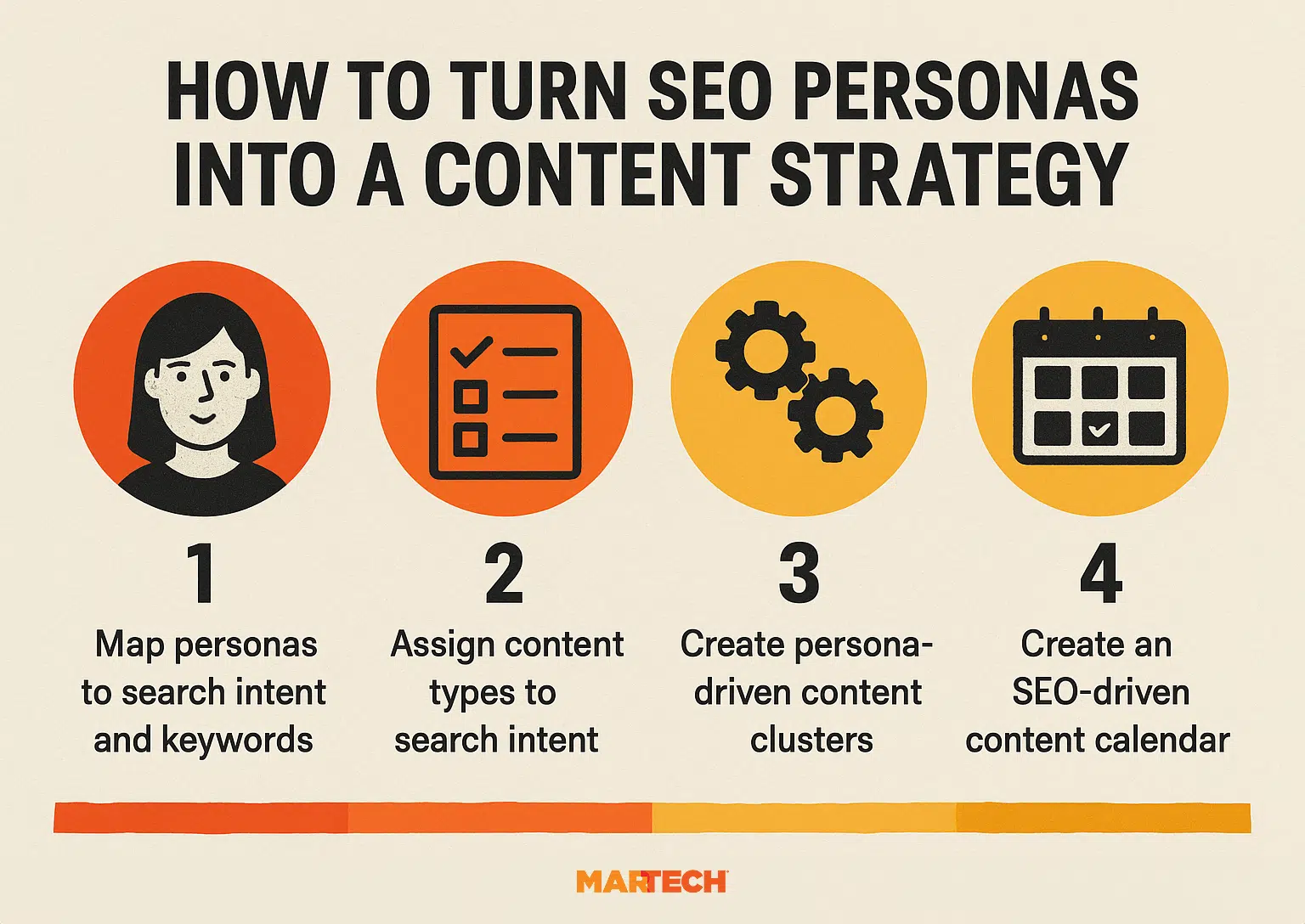
Let’s get into it.
Map personas to search intent and keywords
Start by grouping related keywords by persona, search intent, and funnel stage.
Organizing your keyword research around each persona and their position in the buyer journey will help you create clear content clusters that address specific audience needs.
For reference, the buyer journey funnel steps are:
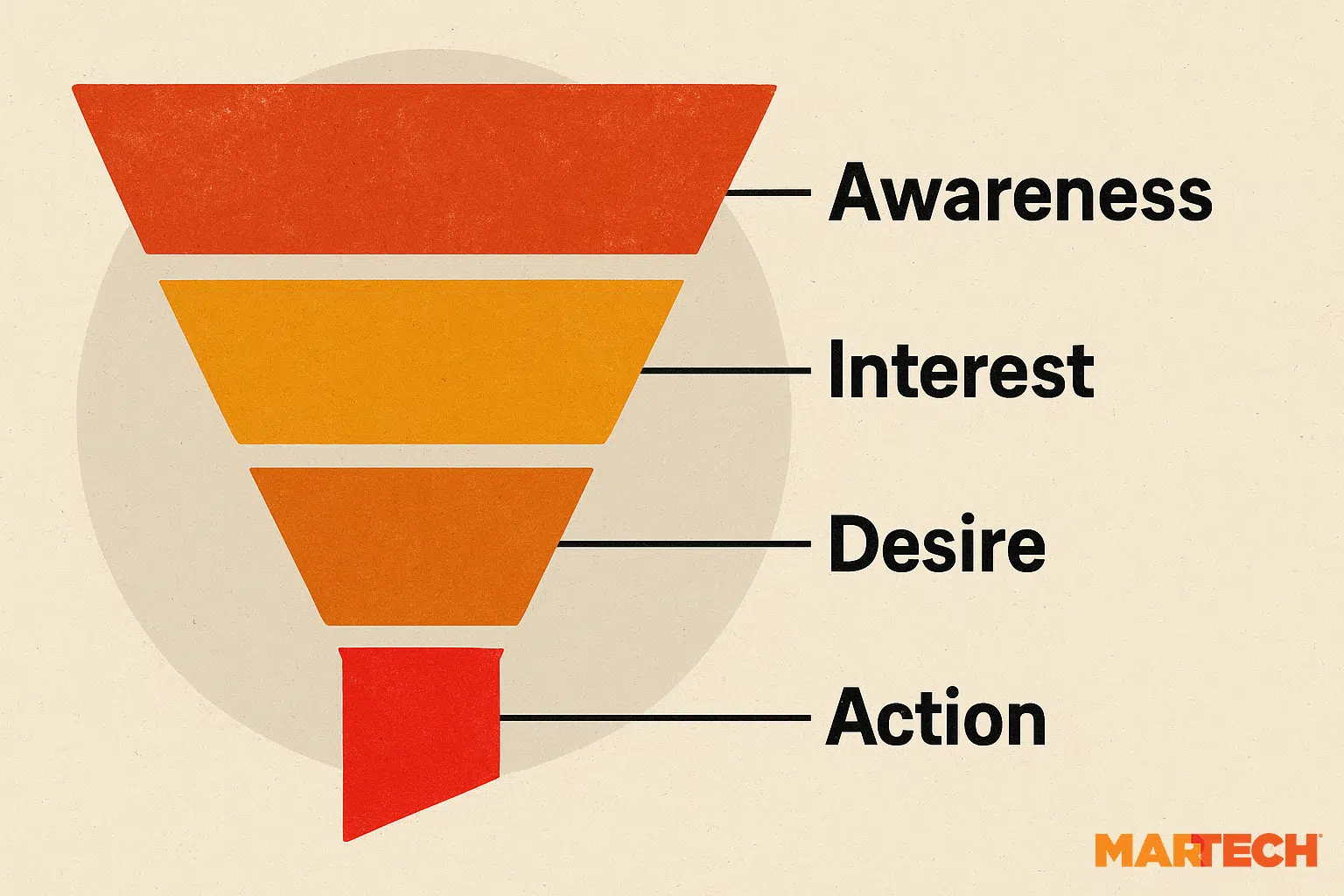
For example:
- “What is [topic]” keywords: These are top-of-funnel, informational content keywords. They’re best for targeting users in the awareness stage. Map these to your persona who’s just investigating a topic but isn’t sure about making a purchase yet.
- “Best [product] for [use case]” keywords: These are middle-of-funnel keywords, best for targeting users in the consideration stage. Map these to your persona who’s figuring out what they need, but might not purchase just yet.
- “[Brand] pricing” or “[product] features” keywords: These are bottom-of-funnel keywords you should use to target users in the decision stage. Map these to your persona who’s ready to buy.
This keyword-to-persona alignment helps you understand exactly what content each audience segment needs at different stages of their search journey.
Assign content types to search intent
Now, it’s time to use your search intent research to figure out what types of content to post for each stage. Your intent-based content strategy should match content types to the goals of each search.
Awareness stage content:
- Blog posts answering “what,” “why,” and “how” questions
- Educational guides that address pain points
- Industry trend analysis and thought leadership pieces
Consideration stage content:
- Comparison pages highlighting different solutions
- Case studies showing real-world applications
- Tool reviews and feature breakdowns
Decision stage content:
- Product or solution landing pages with clear value propositions
- Pricing information and buying guides
- Customer testimonials and social proof
When you make sure users at each buying stage are finding the right content at the right time, you have a better chance of winning their business.
Create persona-driven content clusters
Now that you have keywords, search intent, buyer stage, and content types all mapped to your personas, it’s time to actually plan out your content.
One of the best content strategy frameworks to utilize is the topic pillar and cluster content model. Using this framework, you create one main topic page (e.g. “The Ultimate Guide to SEO), then write a cluster of pages that dive into subtopics and support your pillar (e.g. “How to Do On-page SEO” and “How to Create a Sitemap”).
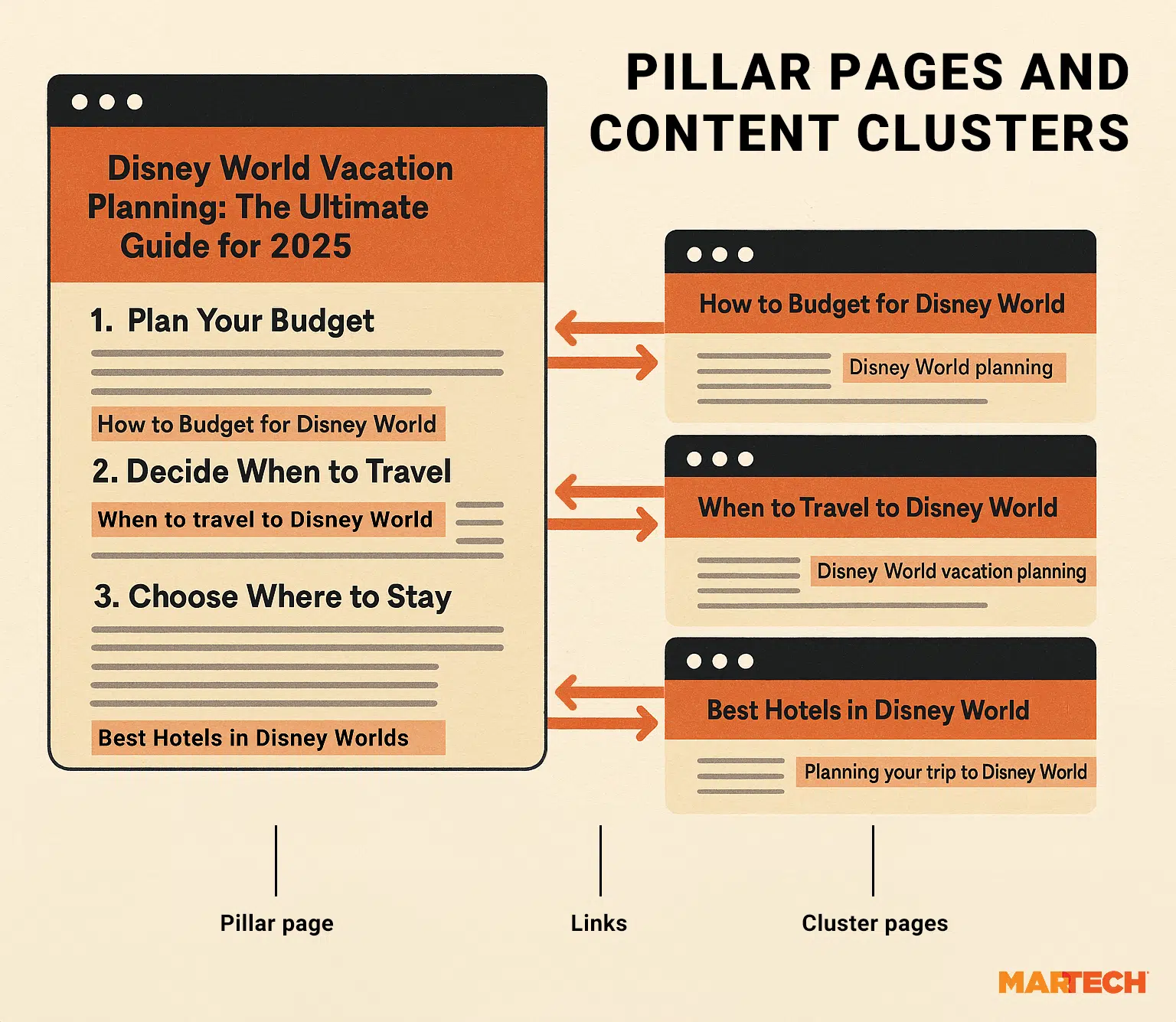
Pillar and cluster content strategies can address each persona’s complete search journey, from awareness all the way to decision.
For each major topic, create:
- A comprehensive pillar page that broadly covers the main topic
- Supporting cluster pages that dive deep into specific subtopics
- Content that connects different stages of the buyer journey for each persona
This approach helps you capture traffic for all the keyword variations under your main topic umbrella, build topical authority that benefits your entire site’s SEO performance, and reach your audience at every stage of their buyer journey.
Want to make it easier by using a tool? Try the Keyword Strategy Builder:

Dig deeper: Keyword Clustering in a Flash with Keyword Strategy Builder
Create an SEO-driven content calendar

Finally, make sure to let your SEO personas guide every piece of content you write. If you do that really well, you’ll have a super optimized, SEO-driven content strategy.
Keep these tips in mind:
- The personas you want to target first should determine which content you give priority to on your editorial calendar.
- When you create your content, make sure to adapt the format (video, written guide, checklist, etc.) to your persona’s needs and preferences.
- Customize your content’s tone, style, and calls to action based on persona.
- Use A/B testing to find the right language and serve up personalized experiences, too, depending on the capabilities of your A/B testing tool.
- Include internal linking that guides users to the next logical step in the buyer journey.
- Adapt your content depth to make it appropriate for the persona’s knowledge level and time constraints.
That’s it! You’ve got a targeted, SEO- and persona-driven content strategy.
Pro tip: If you need help creating a content calendar that really works for you and your team, check out How to create a content calendar that actually works.
Measure success & refine personas over time
Creating SEO personas isn’t a one-and-done task. Instead, it’s an ongoing process that should evolve alongside your audience, the SEO and marketing industry, and your business.
Start by monitoring the performance of content tied to each persona. Track how well those pages are ranking, how much organic traffic they’re attracting, and whether users are taking meaningful actions (like subscribing, downloading, or converting).
The key metrics to watch to determine content and persona success include:
- Organic conversions tied to persona-specific content indicate whether your content is driving meaningful interactions or not
- Bounce rate and engagement rate indicate your content’s relevance and whether or not it’s matching search intent
- Scroll depth, average engagement time, and return visits indicate whether the content meets user expectations
Find these metrics inside your analytics tool of choice, like Bounce rate here in the Landing page report inside Google Analytics:
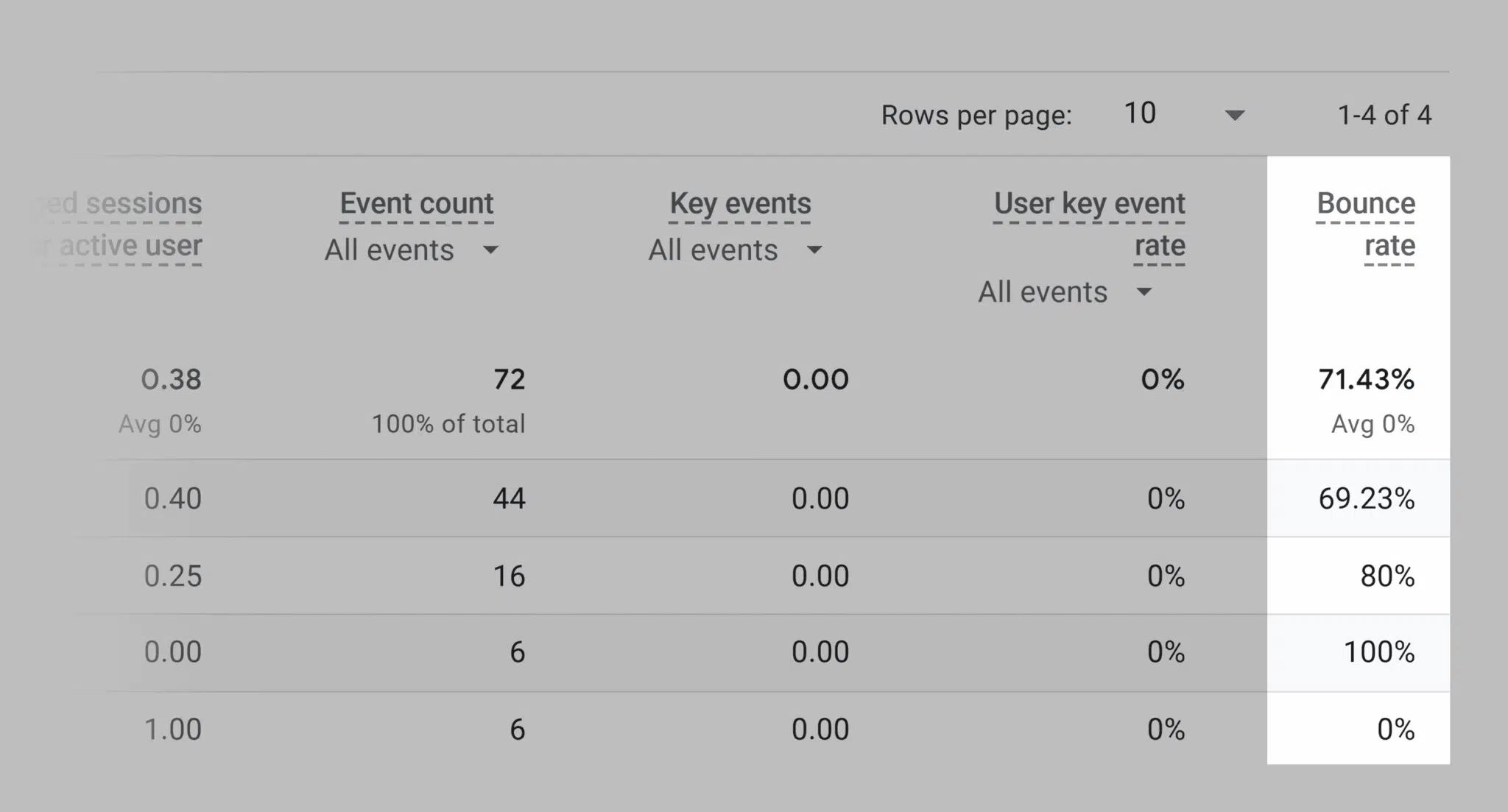
These behavioral signals help to either validate or else challenge your personas. If a piece of content is underperforming, it might mean that either your persona needs tweaking or your content does.
As your business goals shift, are honed, or search trends evolve, revisit and refine your personas. Use fresh data from Google Analytics, Google Search Console, and other tools to keep your personas up to date and continuously improve your content.
Dig deeper: SEO KPIs: 12 KPIs for SEO to Track & Measure
From persona to content strategy: An example
We’ll leave you with two examples of a persona, keywords that match each persona, and a content map we created to match.
Here’s how two persona-to-content mapping layouts might look for a project management software company:
Persona: “Overwhelmed Team Lead”
- Search goals: Find tools to organize scattered team workflows
- Primary keywords: “project management software for small teams,” “project management tools”
- Content mapping:
- Awareness: “5 Signs Your Small Team Needs Project Management Software” (blog post)
- Consideration: “Asana vs. Monday.com: Which Works Better for Small Teams?” (comparison guide)
- Decision: “Get Started with [Product]: Setup Guide for Team Leaders” (product page + tutorial)
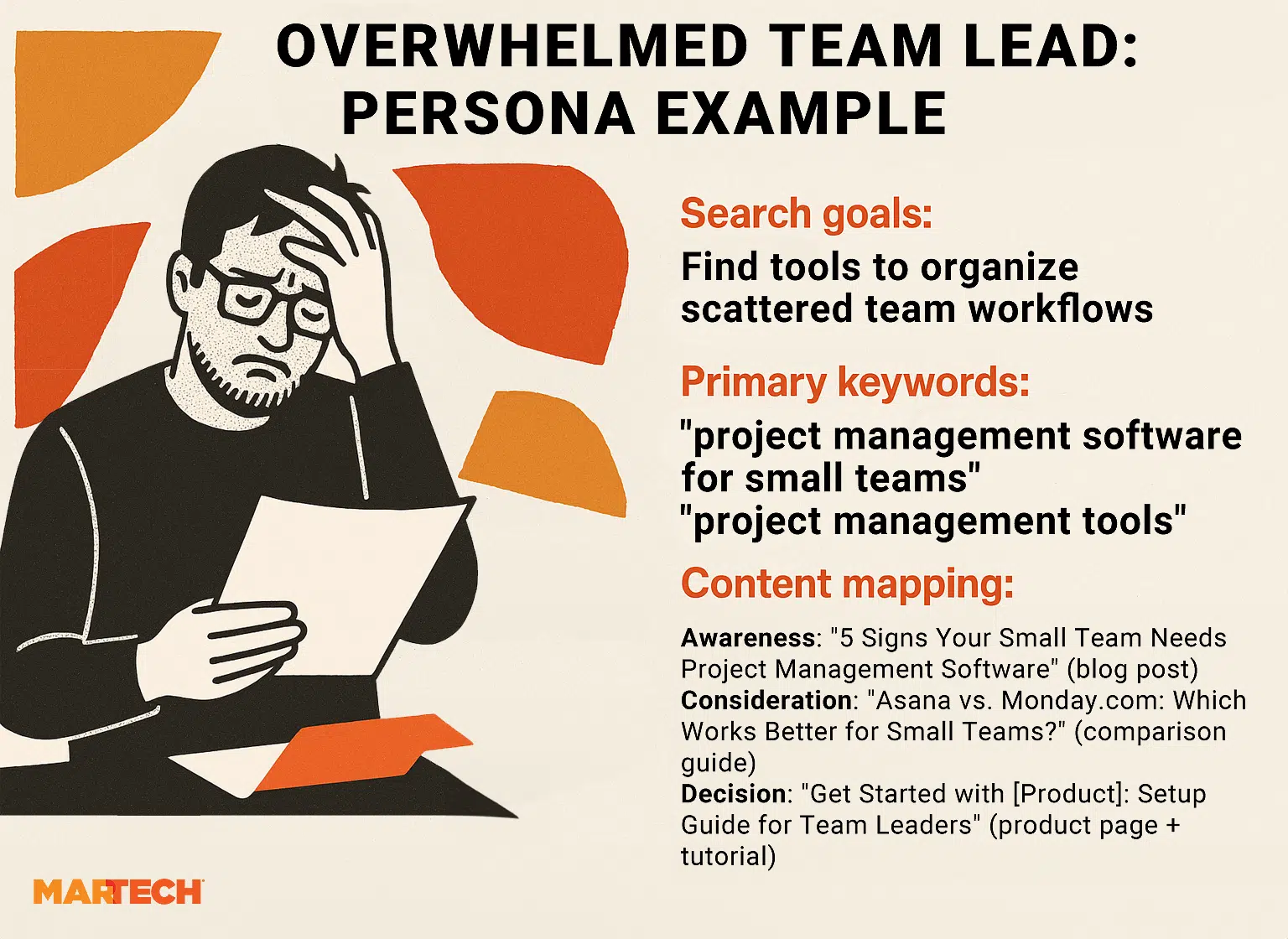
Persona: “Budget-Conscious Startup Founder”
- Search goals: Find cost-effective solutions that scale with growth
- Primary keywords: “free project management tools,” “affordable PM software for startups”
- Content mapping:
- Awareness: “Project Management on a Budget: Free Tools That Actually Work” (guide)
- Consideration: “Free vs. Paid Project Management: When to Make the Switch” (comparison)
- Decision: “Startup Pricing: How [Product] Grows with Your Business” (pricing page + calculator)
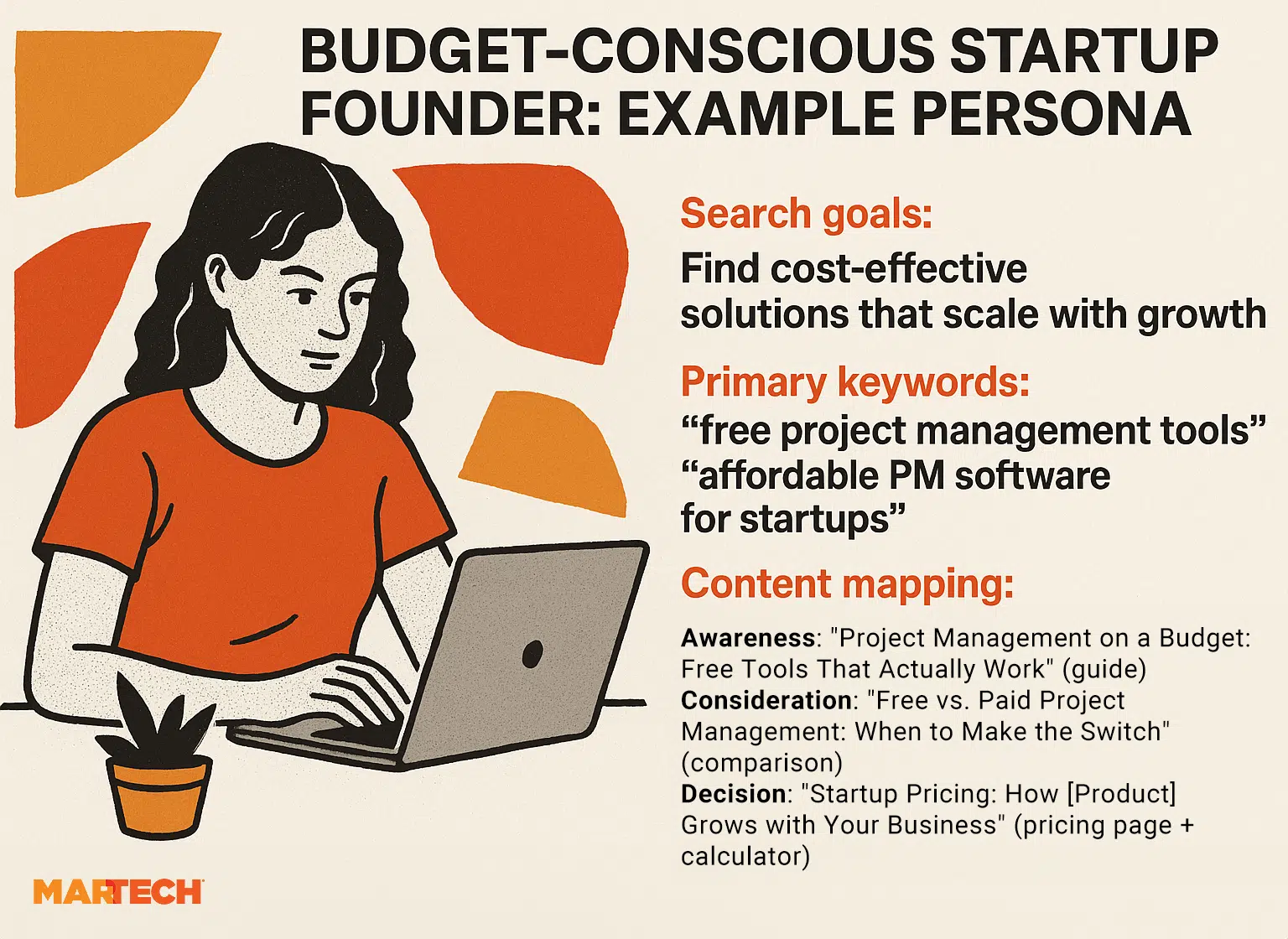
Ready to create your super-optimized SEO personas?
Now that you have all of the details you need to create amazing SEO personas and a content strategy to match, you’re ready to dive in and create your own.
Need a little bit more guidance? Here are a few resources that’ll help you get started:
- Free buyer persona templates
- More on topic clusters, including real-life examples
- Want to know how AI fits into all of this? Check out these 17 tips to improve your AI-assisted content creation process
- For a more hands-on tutorial, enroll in this free customer persona building course.
New on MarTech